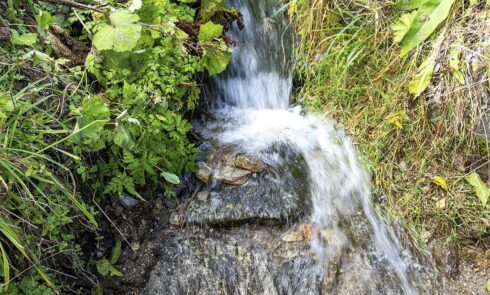The quality of water and drinking water in the country has improved over the past 50 years, but challenges remain.
Safe and clean water is essential for human and environmental health and the economic well-being of the nation. Over the past 50 years, the quality of water and drinking water in the country has improved, but threats to water quality and safety remain. For example, the Environmental Protection Agency (EPA) and states have identified nearly 70,000 water bodies across the country that do not meet water quality standards. Additionally, the discovery of toxins in our communities, such as elevated lead levels in drinking water in Flint, Michigan in 2015 and new contaminants near military bases such as per- and polyfluoroalkyl substances (PFAS), has renewed awareness of the risks that other chemical compounds pose to public health.
Ensuring safe drinking water
Under the Safe Drinking Water Act (SDWA), EPA sets legally binding standards that limit the levels of certain contaminants in drinking water. The EPA identifies unregulated contaminants, monitors them, and determines whether they need to be regulated based on factors such as how dangerous they are to public health and how often they occur. To date, the agency has issued standards for about 90 pollutants. However, the EPA could more effectively collect data on unregulated pollutants to determine whether they need to be regulated. In addition, public water systems must comply with monitoring, reporting, and other requirements set by the EPA and the responsible states. However, the data that states provide to EPA does not always reflect the frequency of health-related violations and monitoring by public water systems or the status of enforcement actions.
Additionally, the Lead and Copper Rule requires water systems to test for lead and treat the water to prevent leaching of lead from corroded pipes. The 68,000 water systems that serve most U.S. residents are subject to this rule and must be tested in high-risk areas near lead pipes. However, the locations of many lead pipes are unknown. The EPA should collect data on lead pipes to improve enforcement of the rule. Lead in school drinking water is also a concern because it is the daily water source for more than 50 million children. EPA and the Department of Education should promote lead testing and improve guidance for school districts and child care facilities.
Under the SDWA, EPA is also responsible for protecting underground drinking water sources from contamination. This is done through the Underground Injection Control (UIC) program, which regulates the injection of wastewater into underground wells. However, EPA has not collected specific verification, complete and consistent enforcement information, or ongoing surveillance to assess whether state-managed and EPA-administered UIC programs for oil and gas wastewater disposal wells are protecting groundwater sources.


